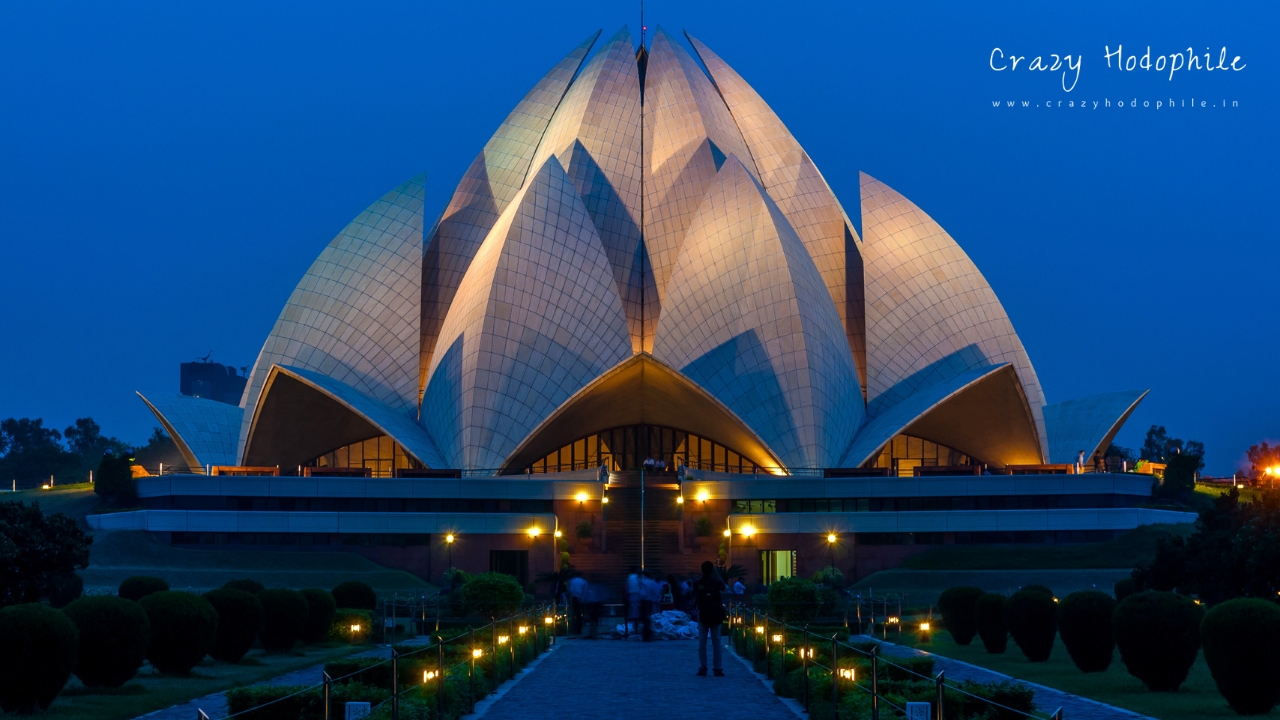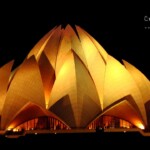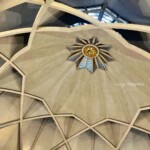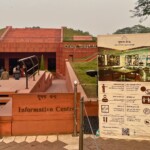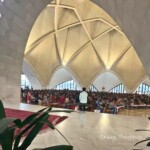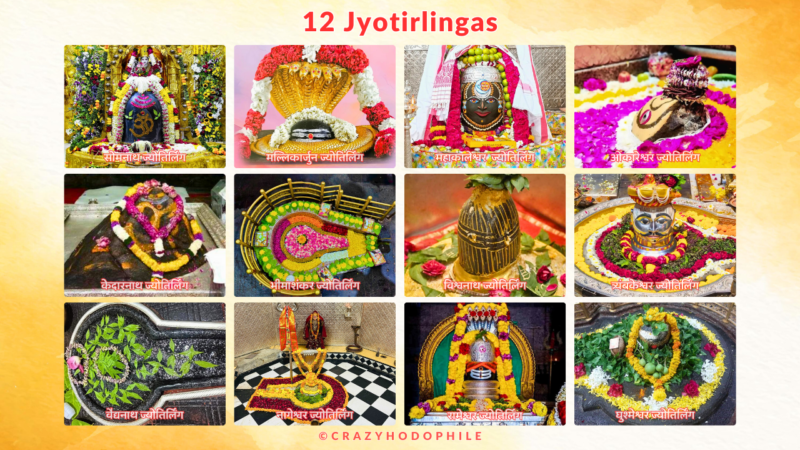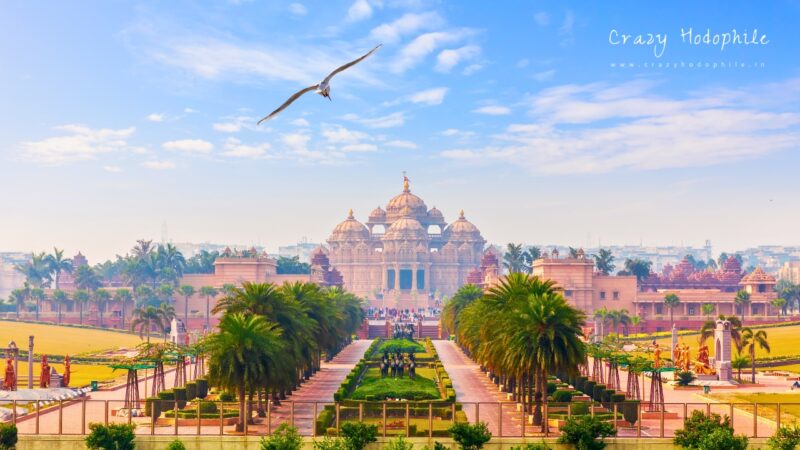Lotus Temple: Unique Facts, History, and Visitor Tips | Crazy Hodophile | 2025
The Lotus Temple, located in the heart of New Delhi, India, emerges as an architectural marvel and a spiritual haven, its luminous petals reaching skyward in a gesture of universal welcome. It is more than just a visual delight; it is a testament to the Baháʼí Faith’s central principle of the oneness of humanity. Within its serene halls, people of all religions, races, and backgrounds gather to pray, meditate, or simply find a moment of quietude amidst the city’s clamor. There are no rituals, sermons, or clergy here, only a profound sense of peace and unity.
Table of Contents
Overview
Whether you are a devout follower of the Baháʼí Faith, a spiritual seeker, or simply an admirer of beauty, the Lotus Temple offers a unique and unforgettable experience. It is a place where architecture transcends its physical form to become a symbol of hope, unity, and the boundless potential of the human spirit.
Gallery
Opening and Closing
The Lotus Temple welcomes visitors Tuesday to Sunday, between 8:30 am and 5:00 pm.
Note: Please note that the temple is closed on Mondays.
Best Time to Visit
The best time to visit Lotus Temple is during the winter months, from October to March. Here’s why:
- Pleasant weather, comfortable temperatures, and less humidity
- Festive Season
A Bloom from History
The idea for a Baháʼí House of Worship in India was conceived as early as the 1950s. The Baháʼí community acquired the land in 1976, and on October 19, 1977, Rúhíyyih Khánum laid the foundation stone, symbolizing the start of this ambitious endeavor. Iranian architect Fariborz Sahba then embarked on crafting his architectural masterpiece. Inspired by the lotus flower, a symbol of purity and transcendence across many religions in India, Sahba envisioned a structure that would embody the Baháʼí principle of the “oneness of humankind.” After ten years of dedicated construction and intricate artistry, the Lotus Temple finally blossomed in 1986. Its doors swung open to the world on December 24th, welcoming people of all faiths and backgrounds to experience its unique beauty and spiritual embrace.
Design and Construction
- Petal Perfection: The temple’s 27 stunning marble petals are not just beautiful; they’re arranged in clusters of three to form nine sides.
- Natural Cooling: The design incorporates passive cooling techniques, the nine reflecting pools surrounding the temple aren’t just for aesthetics. They help naturally cool the building, creating a serene microclimate.
- Acoustic Perfection: The central hall boasts remarkable acoustics, enhancing the spoken word and the resonance of silent contemplation.
- Marble Masterpiece: The pristine white marble used to clad the temple comes from the same source as the Parthenon in Greece – Penteli Mountain. Different sizes of marble were used due to the complex design!
Unique Points
- Open to All: Like all Baháʼí Houses of Worship, the Lotus Temple welcomes people of all faiths and backgrounds. There are no restrictions on who can enter.
- No Rituals: There are no sermons, rituals, or clergy within the temple. It’s a space for silent prayer, meditation, and personal reflection.
- Solar Pioneer: One of Delhi’s first religious buildings to utilize solar power.
- Massive Hall: Seats 1,300, holds 2,500, 34.3 meters tall, 70-meter diameter.
Guardians of the Temple
The Lotus Temple is owned and managed by the National Spiritual Assembly of the Baháʼís of India. This elected body oversees the temple’s operations, ensuring it remains a space for prayer, meditation, and reflection, true to the Baháʼí teachings.
What to See Inside
- Serene Surroundings: Explore the tranquil gardens and nine reflecting pools, embodying the calmness of a lotus.
- Prayerful Space: The central hall invites silent meditation and personal reflection.
- Information Center: Learn about the Baháʼí Faith at the information center, which features a visitor’s gallery.
Amenities at the Lotus Temple
To enhance your visit to the Lotus Temple, the following amenities are available:
- Refreshments: Washrooms and drinking water facilities are conveniently located within the temple complex.
- Guided Tours: Learn more about the temple and the Baháʼí Faith with free guided tours.
- Bookstore: A small bookstore offers literature on the Baháʼí Faith for those interested in further exploration.
- Accessibility: Wheelchairs are available at the main gate on a first-come, first-served basis for visitors with mobility needs.
- Shoe Storage: A designated space or bag can be provided to keep your shoes safe while you visit the temple.
Prayer Services at the Lotus Temple
In keeping with its spirit of universal worship, the Lotus Temple offers prayer services throughout the day. These services, lasting 10-15 minutes each, are a beautiful tapestry of prayers and readings from various Holy Scriptures, reflecting the Baháʼí belief in the oneness of all religions.
Visiting Tips
- Respect the sacred space: Remember that the Lotus Temple is a place of worship and meditation. Please maintain a quiet and respectful atmosphere.
- Dress Appropriately: Modest clothing is advised as a sign of respect.
- Photography restrictions: Photography is not allowed inside the central hall.
- Avoid Bringing Food: Food and beverages are not allowed inside the temple premises.
- Beat the Rush: To fully appreciate the serenity and beauty of the Lotus Temple, we recommend arriving before 4:00 pm. As closing time approaches, visitor traffic typically increases, which may result in extended wait times.
Understanding the Baháʼí Faith
To truly appreciate the Lotus Temple, one must understand the Baháʼí Faith itself. The Baháʼí Faith was founded by Baháʼu’lláh in 19th-century Persia (present-day Iran), this relatively young religion emphasizes the unity of all religions and humanity. The Baháʼí Faith promotes the following principles:
- Oneness of God
- Unity of Humanity
- Harmony of Science and Religion
- Universal Education
- Elimination of all forms of Prejudice
Baháʼís have faced persecution in various countries, particularly in Iran, where their faith originated. They have been subjected to:
- Imprisonment: Thousands of Baháʼís have been imprisoned for their beliefs.
- Execution: Hundreds of Baháʼís have been executed by the Iranian government.
- Denial of Education and Employment: Baháʼís are often denied access to higher education and government jobs.
- Confiscation of Property: Baháʼí properties, including homes and businesses, have been confiscated.
- Destruction of Holy Places: Baháʼí cemeteries and holy places have been desecrated and destroyed.
How to Reach
- Nearest Metro: Kalkaji Mandir (Violet Line) – a short 500-meter walk.
- By Bus: Regular buses stop at Nehru Place bus terminal, a 10-minute walk away. Delhi Transport Corporation (DTC) buses are 440A, 445A, 534A, 764, and DS-5.
- Bike Taxi/Cabs/Auto-rickshaw: Easily available throughout Delhi
Location Map for Lotus Temple
Nearby Attractions
- Kalkaji Mandir (1 km): A revered Hindu temple dedicated to Goddess Kali.
- ISKCON Temple Delhi (2 km): A prominent temple dedicated to Lord Krishna.
- Garden of Five Senses (9 km): A beautifully landscaped park with themed gardens and sculptures.
- Metro Museum (10 km): Located at Patel Chowk Metro Station, this unique museum offers insights into the history, development, and workings of Delhi’s metro system, making it a must-visit for transit enthusiasts.
- Qutub Minar (12 km): A soaring minaret, a masterpiece of Indo-Islamic architecture.
Related External References:

